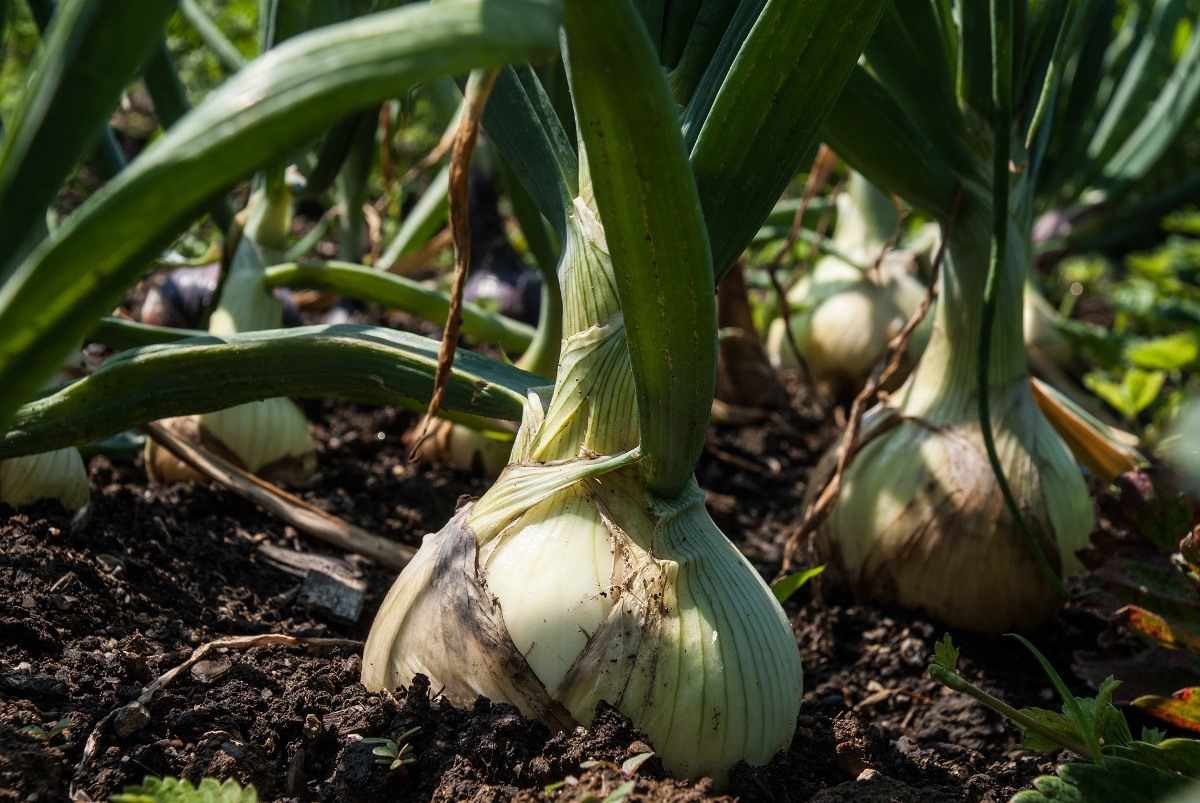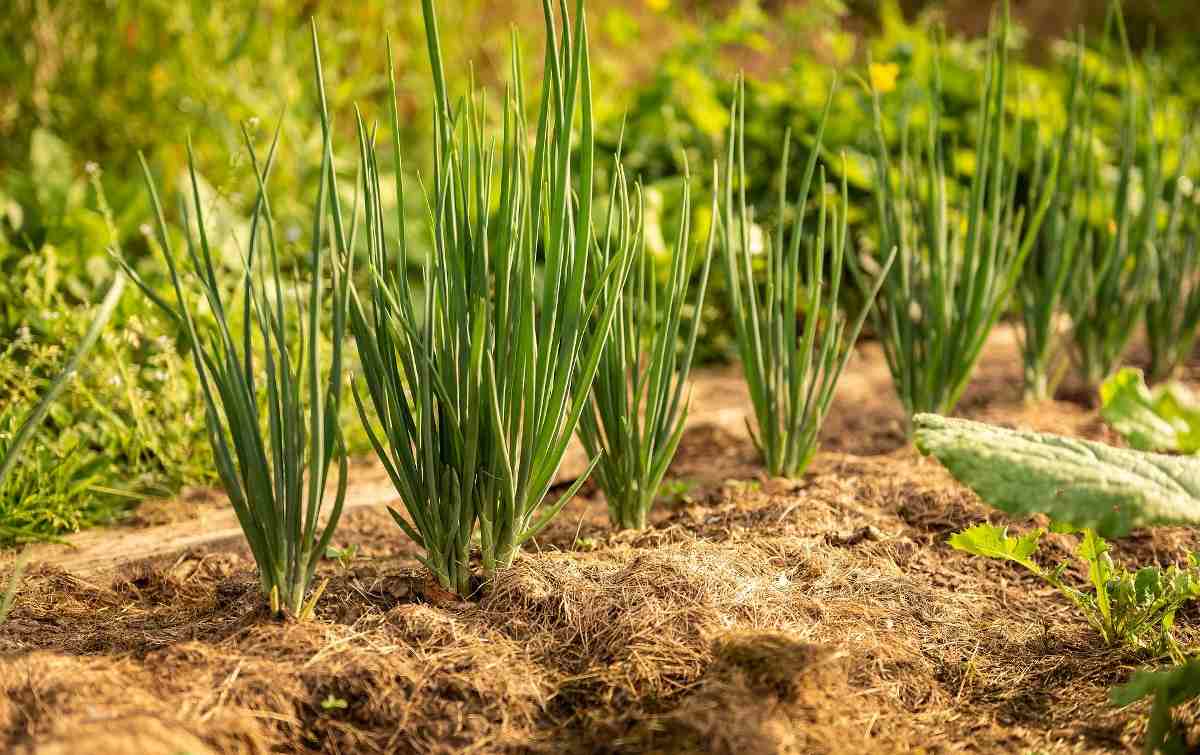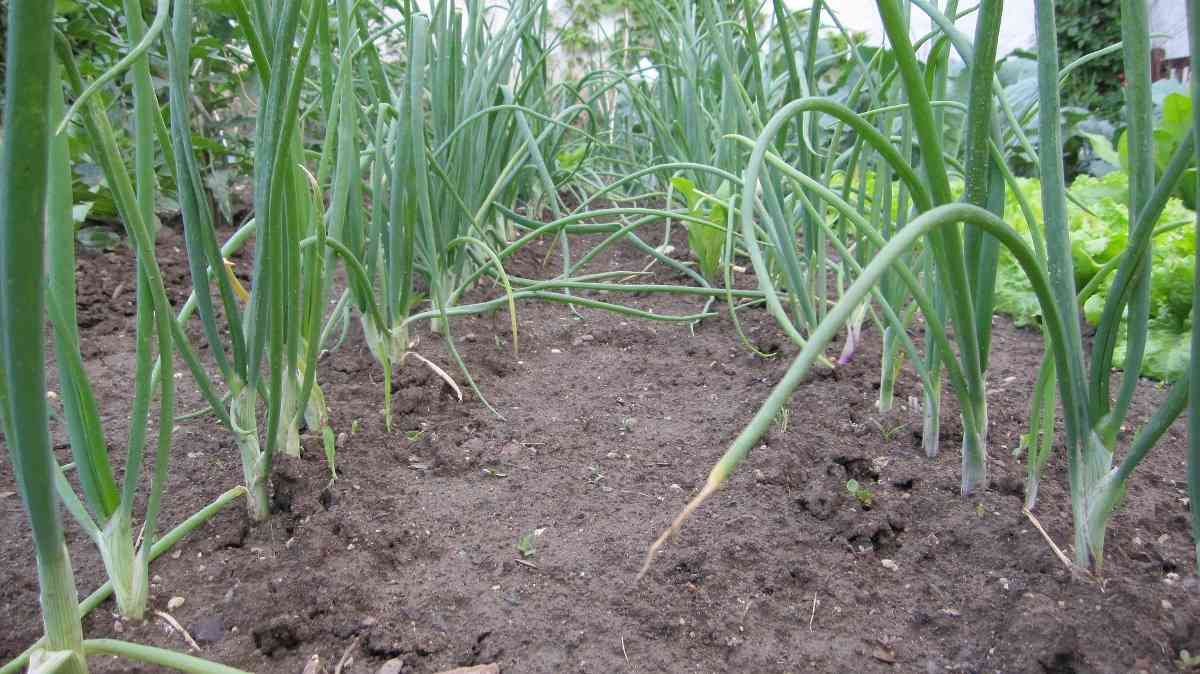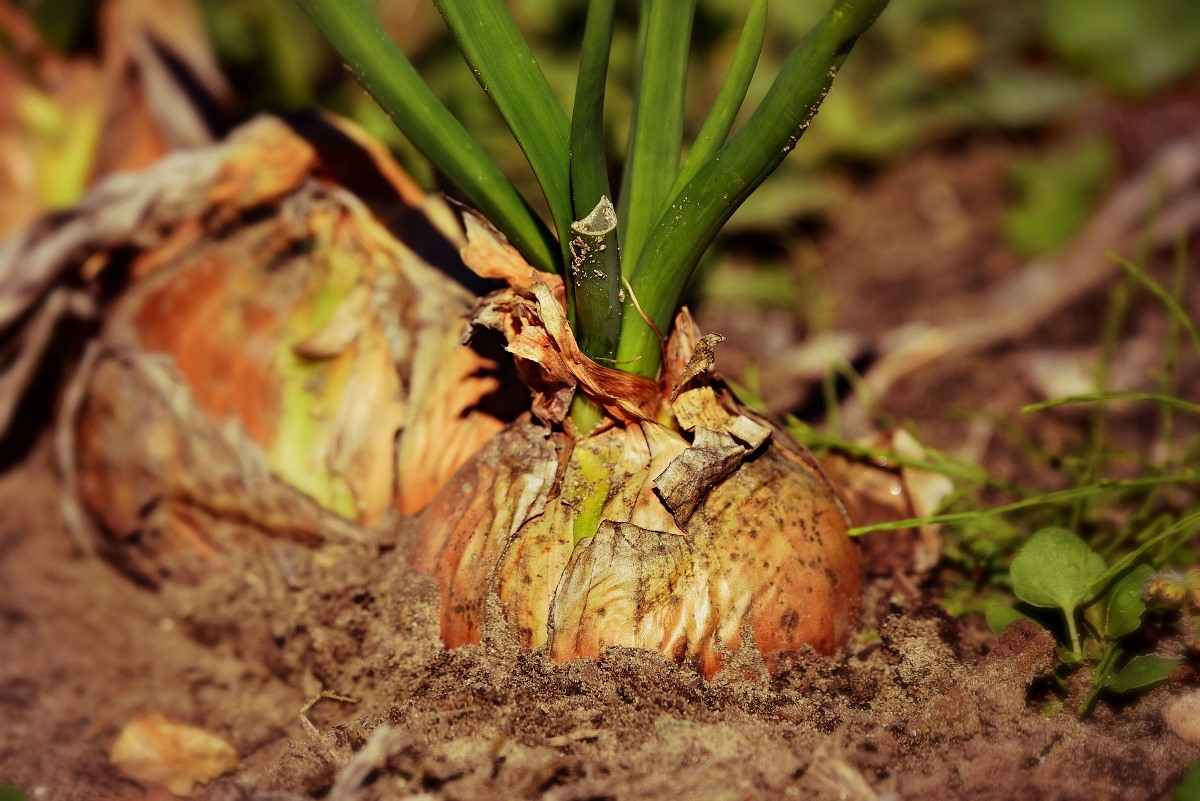Growing organic Onions
Organic Onions are as simple to grow as they are delicious to eat in a variety of dishes. And, as long as you have another Onion on hand, you don’t require growing them from seed. By cutting the bottom of the Onion off and planting it in soil, you can grow Onions from cuttings. Onions are one of the popular vegetables for growing in home gardens and are one of the first crops of spring.
A step by step guide to growing organic Onions
Onions come in a wide variety of sizes, shapes, and colours. The yellow, white, or red bulbs range in size from small pickling Onions to large Spanish cultivars; they can be globe, spindle-shaped. Testing two varieties of Onions in both organic and conventional growing environments, they found that the organic Onions had noticeably advanced levels of antioxidants. The difference, surprisingly, doesn’t come from herbicides/pesticides, rather from the organic soil treatment. The soil treatment helped boost flavonols by 20% over conventional Onions and rises antioxidant activity in both varieties of Onions.
Organic Onions are heavy feeders with shallow root systems, so proper soil fertilization is essential to a high yield of top-quality Onions. Proper soil fertility is particularly important in areas where Onions must make rapid growth before bulb formation is triggered by decreasing day lengths. Several fertility programs will allow you to easily provide Onions with the nutrients they need. Organic Onions offer a large number of vitamins and minerals to our bodies.
Different varieties of Onions
The most common Onion varieties are;
Yellow Onions – Yellow Onions are considered to be an all-purpose Onion due to its good balance of flavour. Yellow Onions become sweeter the longer they cook, making them perfect for use in casseroles or with a roast.
White Onions – White Onions have a little sharper flavour than yellow Onions. They are great in salsas and chutneys.
Sweet Onion – sweet Onions are, of course, a little sweeter Onion. They are perfect in salads, salad dressings or on top of sandwiches.
Red Onions – Red Onions are mild in flavour and because of their pretty colour; they are used most often in salsas, salads, and other raw preparations.
Soil requirement for growing organic onions

Onions prefer well-drained, loose soils that are high in fertility, slightly acidic, effectively irrigated, and in full sun. The looser the composition of the soil, the larger your Onion bulbs will grow. Prepare your bed by turning under animal manure or compost, making sure that it is fully broken down before planting. Compost composed of cedar or redwood is not an acceptable substitute for high-quality compost. Onions are heavy feeders, so provide plenty of phosphorus and nitrogen. A good rule of thumb is to add one cup of equal parts bone meal and blood meal every 10 feet of row.
Organic Onions grow best in a full sun and deep, fertile, well-drained soil with plenty of organic matter. Work in a generous amount of organic compost or well-aged animal manure before planting. All varieties are shallow-rooted and need constant moisture near the surface.
How to plant Onions

Choose a sunny site with fertile, well-drained soil, and loosen the planting bed to at least 12 inches deep. Mix in a 1-inch layer of mature compost. Make 4 inches deep, V-shaped furrow in the prepared bed. Bottom of the furrow fill with 1 inch of rich compost or a light dusting of dry organic fertilizer and then water the prepared furrow. Set out seedlings or sets 3 to 6 inches apart, depending on the plants’ mature size.
Starting from seed is the only way to get classic, gourmet varieties. Sow indoors up to twelve weeks ahead of outdoor transplanting. Set out two weeks before the last frost. You can also purchase sets from nurseries and garden stores. Sets are easy to start and mature quickly, but varieties are often limited.
When planting Onions allow 2 to 4 inches between seedlings in traditional rows spaced 1 to 2 feet apart. Mulch and weed thoroughly. Feed young plants with a high-quality organic vegetable fertilizer and apply Liquid Fish and Seaweed later in the season to increase crop yields, taste and appearance.
Onion plant spacing
In case if you miss this: How To Make Compost At Home.

Give Onions enough space about 4 to 6 inches apart for them to reach an impressive weight. For high-intensity planting, 4 inches will be the ideal amount apart for each plant. Using high-intensity spacing methods will also cut down on the amount of weeding you will have to do in the garden. Make sure to weed around your Onions as much as possible.
Growing organic Onions from seeds
At over 4 months, your Onions will take the longest time to grow when you plant them directly from seed, but the wider choice of varieties to choose from makes this well worth it for many gardeners. Plant your seeds indoors or in cold frames at least 2 months before the last frost date. Try to keep the temperatures cool, usually, about 15°C. As your seedlings sprout to several inches tall, you can trim off the ends to encourage them to grow stocky, not spindly.
You can direct sow Onion seeds about 4 weeks before the last frost date. Plant your seeds thickly in rows that are over half an inch thick. A smart idea is to mix in early-sprouting radish seeds with your Onions so that your rows will be marked early on before your Onions sprout.
Growing organic Onions from sets
Growing Onions from sets couldn’t be easier, so long as you plant the right variety for your climate conditions. Simply plant each set about an inch deep and space them 3 inches apart. You can harvest sets early for use as green Onions or scallions or allow them to grow to maturity for the biggest harvest.
Water requirement for growing organic Onions
Organic Onions require consistent supplies of water so either irrigate the Onion patch or follow the methods of core gardening for a hands-off approach. Maintaining even soil moisture must be the goal. Provide extra water towards the end of the season until tops fall over for harvesting. At this point, they will be dripping with flavour and ready to store.
The easiest way to fertilize organic Onions
Spread 2 or 3 shovelfuls of compost among the Onions instead of fertilizer and dig it lightly into the soil. Take care not to nick the bulbs with the shovel. Read package labels carefully and choose a high-quality compost made from composted vegetable material and manure. Avoid composts that contain sludge or biosolids in the vegetable garden.
Nitrogen – Organic Onions have moderate nitrogen requirements, but nitrogen fertilization is still important because Onions have weak, shallow root systems. Decaying organic matter offers some nitrogen, so your nitrogen requirements will decrease as your soil organic matter increases. For Onions grown in soils with moderate levels of organic matter, some studies recommend 5 1/4 ounces of applied nitrogen per 100 square feet of growing space. You can supply this quantity of nitrogen with 4.7 pounds of cottonseed meal, 2.7 pounds of blood meal, or 3.3 pounds of commercial fertilizer.
Potassium and Phosphorus – Onions have relatively high requirements for phosphorus and potassium. Fertilizers supply these nutrients in the form of phosphate and potash. It recommends 2.2 ounces of phosphate and 4.8 ounces of potash per 100 square feet. You can supply acceptable amounts of these nutrients with 3 pounds of 10-10-10 fertilizer or with 1.1 pounds of the bone meal plus 6 pounds of wood ashes.
Minor Nutrients and Trace Elements – Like other vegetables, Onions cannot reach their optimum yield and quality without adequate supplies of minor and trace nutrients, especially manganese, copper, and zinc. The simple way to ensure that your soil contains these minerals is to apply a micronutrient amendment such as azomite or kelp meal at a rate of 1 to 2 pounds per 100 square feet.
Best organic fertilizer for growing Onions
Onions have a shallow root system; they need nutrient-rich soil to thrive. Using the right fertilizer will boost its growth and help the plant produce large and healthy bulbs. When it comes to choosing the right fertilizer for Onion crops, the main thing you should pay attention to is the percentage of nitrogen, phosphorus (phosphate) and potassium (potash) in the product, more commonly known as NPK ratio.
For Onion crops, you should select fertilizer mixtures with higher nitrogen levels. Not only that this nutrient increases the yield, but nitrogen improves bulb quality, storability, and disease resistance. For most garden soils, a nitrogen-based fertilizer or a balanced fertilizer with an NPK ratio of about 16-6-4 is the best choice. However, if you already use organic compost, or the soil in the garden already has enough nitrogen, using potash or phosphate-based fertilizer can benefit your Onion crops without oversaturating the soil or burning plants.
Also, you might want to provide Onion crop with micronutrients like copper, zinc, and manganese, especially if you’re growing them on the poor garden soil. These trace minerals and minor nutrients are essential for abundant crop yield, as they give optimum soil quality. Chicken manure is high in nitrogen it is great for Onions and it is used as an organic fertilizer for your crops. Though, it is important to note that fresh chicken manure applied directly to your plants can do more harm than good. For that reason, if you are planning on using chicken manure it can be better to compost it first. Then, this allows time for those powerful nutrients to breakdown.
Some common problems for growing organic Onions
There are some common problems (including pests and diseases) for growing Onions in the home garden. Here we are describing the common problems.
Onion Maggots – Onion maggots lay eggs near the base of the Onion plants. The larvae hatch and burrow into the stems, feed on the plants below the soil and eventually kill the plants. Crop rotating is a good way to prevent this. Covering the new seedlings will prevent the eggs from being laid, and applying diatomaceous earth is also effective.
Thrips – Thrips are small yellowish-brown flying insects that feed on leaves and can cause twisting and curling. Sometimes cause the plant to stop growing which ultimately results in the bulbs don’t mature. Planting a resistant variety will help prevent this problem. Using organic materials such as neem and insecticidal soaps will help prevent thrips. Crush 500 gm garlic and mix in 5 liters of water. Filter and spray separately by 5ml in 1 litre of water. Spray 3 % neem seed kernel extract. Place traps closer to the plants but not touching the leaves.
Rot – You may encounter neck or bulb rot or stem rot in damp soils. Good drainage and air circulation system can help for avoiding rot.
Splitting – If the soil remains dry during the period when the bulbs are forming, the bulbs will split or double.
Harvesting Onions
Onions are ready to harvest when the tops fall over naturally, usually 80 to 100 days after direct seeding; 30 to 40 days from sets. Pull bulbs from the ground and let them air-cure for 2 weeks. Watering before harvest makes pulling easier.
Onions are almost ready to harvest once their tops stop growing and begin to turn yellow. At this time you can use the back of a rake to bend the tops over towards the ground, which helps to stop them from growing and instead focuses the plant’s energy towards the maturing bulb. After a few days, you can dig up the bulbs and allow them to dry out in the sun, being sure to put the tops of some bulbs over others to prevent them from getting sunburned. Once the outer Onion layers are dry, you can wipe off the excess soil and remove the tops. Be careful not to bruise them, as any cuts or bruising will cause your Onions to go bad much more quickly.
Commonly asked questions about growing organic Onions
You may also check this: How To Grow Ginger At Home.

Do Onions require a lot of water to grow?
Onion plants need adequate water to produce high yields, but it doesn’t take much overwatering for your Onions to become diseased and rot in the ground.
Can you grow new Onions from an Onion?
As long as you have another Onion with you, you don’t need to grow them from seed. By cutting the bottom of the Onion off and planting it in soil, you can grow your Onions from cuttings. With time, patience, and plenty of water, you can grow an Onion from an Onion in 90 to 120 days.
Why are my Onions not getting big?
Ensure sufficient moisture during bulb formation especially – Onions won’t look like they need water, but they do! Plant early enough in the season to ensure Onions will get enough hours of daylight.
How long will it take for Onions to grow?
Onions are cool-season crops that require 90 days or more to reach maturity. Due to this long growing season requirement and their preference for cooler weather, planting Onion seeds directly into the garden in the spring makes it difficult for the bulbs to reach a good size earlier warm temperatures arrive.
Do Onions need a lot of suns?
Onions need full sun. Select a location where your Onions won’t be shaded by other plants. Onions need well-drained, loose and nitrogen-rich soil. Till or turn your garden soil as soon as it is workable in the spring.
Why are my Onions not growing?
For an Onion plant to be healthy enough to form a bulb, it requires plenty of nutrients in its early growth stages. If there is too much nitrogen, your Organic Onion plants will put on lush above-ground growth but will fail to produce bulbs. Organic Onions also require regular water for healthy growth and bulb formation.
Why are my Onions not getting big?
Ensure sufficient moisture during bulb formation especially Onions won’t look like they need water, but they do! Plant early enough in the season to ensure Onions will get enough hours of daylight. Loosen the soil so the soil is not too compact for the bulb to grow.
Why are my Onion seedlings turning yellow?
Just as too much or not enough light can cause yellowing plants, too much or too little water or fertilizer could also be the problem. If the soil around your plants has been completely dried out between watering’s, your seedlings are probably just thirsty.
In case if you are interested in this: Organic Hydroponic Farming, Cultivation Practices.